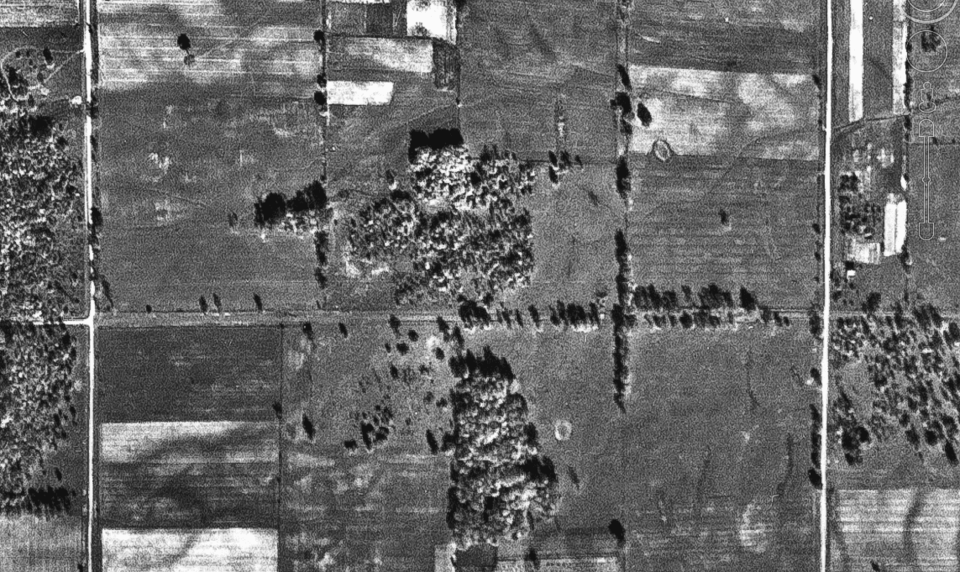Regional road construction in the future
BY JOHN CHICK Special to the VOICE
After a robust schedule of fall meetings, Pelham Town Council enjoyed somewhat lighter fare during its November 4 gathering, highlighted by a Regional presentation on upcoming roadwork.
Niagara Region Associate Director of Transportation Frank Tassone outlined several projects in Pelham, including continuing work on Rice Road south of Highway 20.
The next stage, he said, will be upgrading the avenue between Merritt and Thorold Roads with an estimated completion date of 2025.
Councillor Lisa Haun questioned Tassone on work already done on the stretch between 20 and Merritt, specifically why the roadway wasn’t widened to four lanes from its existing two, with an auxiliary turning lane.
“It’s a very, very busy road,” she said. “It seems like a missed opportunity … I’m concerned that we’re growing at such a rate.”
Tassone maintained that traffic consultants didn’t believe widening was necessary.
“At that time it didn’t warrant going to four lanes. That study was only done a couple of years ago,” he said.
When asked by Haun if that could be re-evaluated later, and if construction along the road would affect future expansion, Tassone said the current roadway meets anticipated needs.
“That would be re-evaluated if we saw capacity failing on that road,” he said. “Two lanes can handle about 1,000 cars an hour on that road.”
With work planned further south to Thorold Road, Haun asked if the intersection of Rice and Quaker would eventually get signal lights, as opposed to its current busy four-way stop. Tassone did not know. “I’m not 100 percent sure about that,” he said.
Staying in the vicinity, Tassone was asked about the status of the Merritt Road connector, the long-discussed plan to extend Merritt the .8 kilometer distance from Rice to Cataract. An informal, road-width path has existed through the bush for generations.

He said that project is still awaiting an environmental assessment, but that it remains in the Region’s five-year capital plan. Tassone added that it is the Region’s priority in terms of creating another connection from Fonthill to Highway 406, in theory relieving pressure on 20 and providing another route to Welland.
“The end goal is [for the Region to] own that section of Merritt on [into Fonthill],” he said.
On the far west side of town, Tassone said that proposed signal lights for the intersection of Canboro Road and Victoria Avenue are currently in the hands of consultants, but that the project is budgeted for next year.
He added that major work — including twin culvert replacements — is planned for Effingham Street from Webber to River Roads in 2021, as well as resurfacing Webber between Effingham and Cream.
Tassone also said that automated speed enforcement and red-light cameras could be coming to Niagara and the rest of Ontario, pending government approval. That means strategically placed video cameras which capture the licence plates of speeders and California-sliding-stoppers, taking images which are then used to generate citations sent directly to vehicle owners. It’s a pilot project already underway in Toronto, but is awaiting regulatory changes to be rolled out across Ontario. The province introduced photo radar for speeding in the mid-1990s, but later scrapped it under the Conservative government of Mike Harris after numerous legal challenges.
“The first place you would see it is in school zones,” Tassone said.
Big jump for Regional budget
Regional Councillor Diana Huson made a presentation to Council and said that the Niagara capital budget for 2020 is pegged at $375.5 million, a whopping $100 million more than this year.
“There is quite a crunch in terms of our aging infrastructure,” she said.
Ward 1 Councillor Mike Ciolfi asked Huson if this could mean a tax hike for Pelham residents. She didn’t necessarily think so, saying that tapping reserves is the priority.
“I don’t think that the capital budget is going to draw more from taxes,” she said.
Savings in numbers?
Council unanimously voted to accept a memorandum of understanding that Mayor Marvin Junkin signed with the mayors of Welland, Port Colborne, Thorold, and Wainfleet that would see Pelham team up with the other municipalities for procurements of goods and services. The idea is the group of communities would save money by buying certain items in bulk and splitting the costs. Welland and Port Colborne have had such an agreement for three years. Junkin pointed to items such as sidewalk repairs and tree-cutting services. “Stuff that we don’t do a lot of, but we do every year,” the Mayor said.
“I think it’s an excellent idea,” Councillor Bob Hildebrandt opined, crediting Junkin for jumping on board. “It’s good you’ve taken the initiative to join the group.”
Town CAO David Cribbs agreed, as much for the fact that it would save his staff work.
“We are the perfect size to benefit enormously from an initiative such as this, specifically because we have exactly one person on staff who has the credentials to be a professional purchaser,” he said. “For routine items, routine transactions, we can rely on the group, and we can focus our energies on the unique-to-Town of Pelham purchases, and we can get that value added. We certainly see this as having great potential.”
Ciolfi said that the approach would be perfect for a plan to attack gypsy moths. Junkin agreed.


